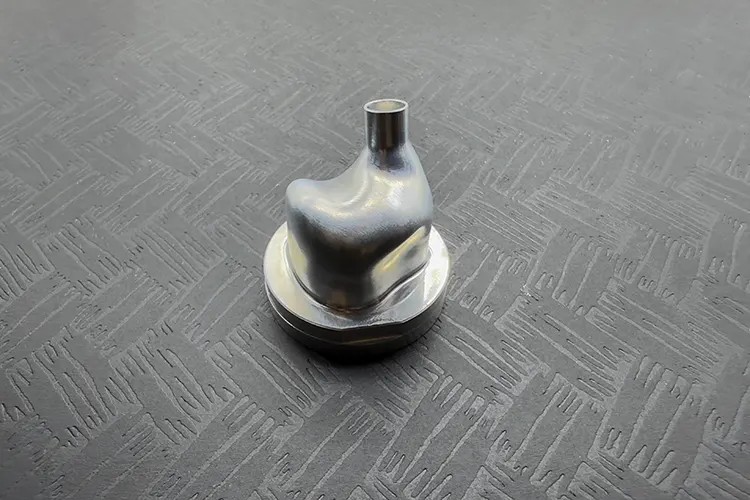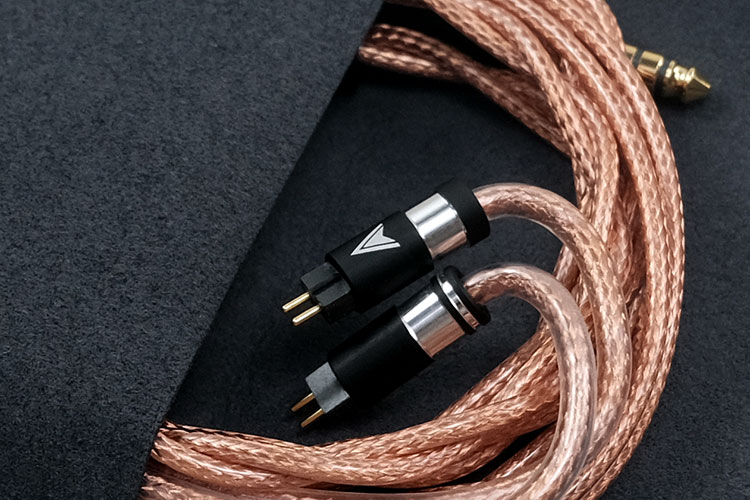Sound Impressions
The following sound impressions of the Softears Enigma were completed using a mixture of my main sources, Lotoo’s Paw Gold Touch and the Astell&Kern SP3000, and occasionally Questyle’s CMA18P and Earmen’s Angel DAC/amps.
During the review, I paired the IEMs with stock Effect Audio cable and Azla SednaLight ear tips, size MS.
Summary
One word that perfectly captures the sound signature of the Enigma is “balance.” Its profile ensures that no single frequency range—whether bass, mids, or treble—takes the spotlight.
Everything is presented smoothly across the spectrum, allowing each element of the music to shine without any one range being too forward or too subdued.
There’s a nice touch of warmth in the sound. The bass is there in just the right amount—never too much, never too little. The mids are sweet and natural, with some impressive detailing, and the treble is detailed without being bright.
It’s the kind of tuning that’s perfect if you’re after pure musical enjoyment and spot-on timbre. I made sure I tried most of the genres in my library for this review.
Despite its tribrid design and high number of drivers, the Enigma achieves a remarkable level of coherency, with all three driver types working seamlessly together, resulting in a more natural, immersive listening experience.
Bass
The bass on the Enigma strikes a nice balance between sub-bass and mid-bass. The composite woofer arrangement consisting of one of the dynamic drivers and two balanced armature drivers, coupled with one other dynamic driver acting in a passive mode, produces a coherent and lifelike bass.
The sub-bass, while not overly dominant, has a solid presence that adds depth to the lower frequencies without overwhelming the overall sound.
It provides just enough low-end extension to create a satisfying rumble. The mid-bass, on the other hand, delivers a punchy and impactful sound, giving the bassline the drive it needs without becoming too forceful or muddy.
Unlike “snappy” or “fast” bass, which has quick attacks and swift decays, this midbass is more gradual in its impact. It fills the listening space with a rich, enveloping sound that lingers longer.
The bass notes take a bit more time to fade, creating a more relaxed and immersive bass experience rather than a punchy, immediate one. This contributes to a bit of laid-back, natural sound that some listeners may find appealing.
The bass definition may not excite the bassheads, as they may find it missing the necessary impact. However, people coming from Twilight’s near-neutral bass will find the fun factor in this bass performance.
Midrange
For me, the mids are the highlight of Enigma’s tuning. The midrange carries a pleasant touch of warmth, making it rich and inviting.
The bass doesn’t intrude on the mids, keeping them clean while subtly adding a layer of lushness and warmth. The midrange offers a decent level of clarity and transparency, making details very clear and easy to hear without any muddiness or congestion.
Vocals come through with a lifelike presence, thick and dense, making them feel central to the entire sound signature. I have hardly come across such realistic vocals as they are on Enigma.
Instrument separation is excellent, with fine details captured beautifully. There is a natural tone on offer with good note weight and a gentle decay that gives the sound a relaxed and immersive quality.
The upper mids are smooth and well-extended, free from any harshness, contributing to a balanced and enjoyable listening experience. Enigma is quite forgiving with poorly recorded tracks as well, minimizing excessive harshness.
Treble
The treble tuning on the Enigma is more laid-back, taking on a supporting role rather than being front and center. It’s natural and detailed with a good extension, complementing the lower frequencies without overpowering them.
The treble is like a double-edged sword; it’s perfect for those who prefer a relaxed yet detailed treble with good control. However, if you’re someone who craves a lot of sparkle and energy in the highs, you might find it a bit lacking.
That said, it doesn’t mean you miss out on detail or that the sound becomes dark; the treble still delivers the necessary clarity, just in a more understated way. The choice of source also plays an important role in the quality of the treble.
Staging & Dynamics
The soundstage on the Enigma is above average, offering decent width and depth without any artificial expansion. It feels natural and balanced, steering clear of any gimmicky effects. While it may not match the spaciousness of some peer flagship IEMs, that’s not what Softears was aiming for.
The soundstage delivers a 3D, holographic experience suggestive of high-quality headphones with a dense and engaging presence.
To me, this stage presentation is more dynamic and on-demand in nature, where the width, depth, and height of the soundstage vary depending on the intensity and complexity of the track being played.
In this soundscape, vocals and mids take center stage, coming across as closer to the ears, while other elements are arranged around them, creating a well-organized and immersive environment.
Instrument separation is excellent, with each instrument having its own space on the stage, even during busy and congested tracks like those in metal or rock genres.
There’s no overlap, and the layering of vocals and instruments is portrayed with impressive accuracy. The channel-to-channel imaging is also spot-on, contributing to the precise and captivating presentation.
In terms of resolution and detailing, Enigma provides a decent level of clarity and precision that allows every subtle nuance of the music to be heard. This presentation becomes crisper and clearer with a good neutral source that does not add warmth to the tuning.
Synergy
Efficiency
The Enigma has an impedance of 10Ω @ 1kHz and a sensitivity rating of 121.5 dB/Vrms, making it easily driven by lower-power sources like dongles and smartphones.
While it doesn’t require a lot of power to sound good, it does benefit from a bit more juice, especially given its EST driver hybrid design. Like other IEMs in its class, the Enigma may need a few extra volume clicks to sound fully engaged; on my Lotoo Paw Gold Touch, I typically keep the volume around 40.
The Enigma truly shines when connected to high-quality sources like the Lotoo Paw Gold Touch or the SP3000. The soundstage becomes more spacious and well-dispersed, with a richer tonal weight, and the dynamics noticeably improve.
Maintaining its impressive performance across various sources, the Enigma remains quiet without producing any detectable hiss, even when using a 4.4mm balanced output.
Source Pairings
The Enigma benefits most from a neutral or slightly bright source, as this adds the desired airiness and energy to the upper frequencies. A very warm source, on the other hand, introduces unwanted warmth and can muddy the sound.
The A&K SP3000 shows the best synergy with the Enigma. The bass remains well-textured with good impact and depth, while the midrange is clean and transparent, thanks to the SP3000’s neutral signature.
The resolution is impressive, with excellent detail retrieval. The treble gains more detail and airiness, and the soundstage is wide with decent depth. The Enigma isn’t particularly demanding, so the SP3000 drives it effectively.
The LPGT adds more body to the bass, resulting in a deeper impact and better texturing. However, the midrange takes on a warmer tone, which might not be ideal. The vocals become denser compared to the SP3000. The treble is less pronounced, with a noticeable reduction in airiness.
The soundstage narrows, though the depth improves slightly. Overall, the LPGT pairing isn’t as impressive as with the SP3000.
The Earmen Angel offers good synergy, similar to the SP3000. With a neutral-bright profile on the Angel, there is more airiness in the sound.
However, the bass loses some punch and impact. The midrange has a neutral nature and loses some warmth. It lacks the musicality of the above two sources. Although the Enigma sounds expansive, it isn’t as detailed as with the other two sources.
Finally, with the Questyle CMA18P, a DAC/Amp featuring an AKM 4493 DAC chipset, pairing adds a sharper treble, giving the Enigma a bit of a spicy character in the highs.
The CMA18P’s high power output provides a fuller presentation, with better body and texture in the bass compared to the Angel. The midrange’s warmth is restored on the CMA18P.
Cable Pairings
While the stock Effect Audio cable pairs well with the Enigma, I decided to experiment with a few aftermarket cables to see how the Enigma responds to cable rolling.
The Luminox Tri-Light cable brings several positive changes. The lower end, while slightly less impactful, gains better texture and a more rounded punch. The treble also sees improvements, with a greater sense of airiness and extended reach into the upper treble region.
The soundstage depth noticeably improves, along with better instrument separation, leading to an overall boost in technical performance compared to the stock cable. For me, the Enigma paired with the Tri-Light and played through the SP3000 is a recommended chain.
With the Astral Acoustics Mars cable, the performance is good, offering better bass definition and a fuller midrange without becoming overly warm. The bass gains more depth and a tighter mid-bass punch.
The midrange has a sweetened tone, taking center stage with vocals closer to the ears. However, the treble region loses some airiness. With Mars, the soundstage becomes more expansive than with the stock cable, with added depth in its staging performance.




